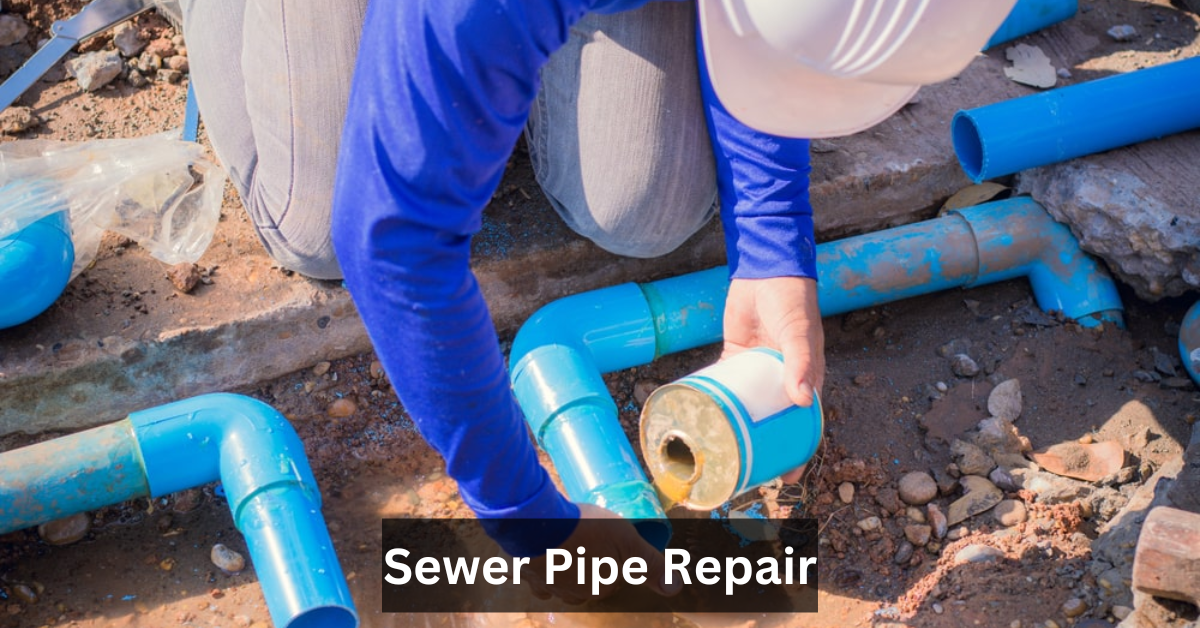When it comes to maintaining your home’s plumbing infrastructure, few issues are more critical—or more overlooked—than Sewer Pipe Repair. While out of sight may mean out of mind, a damaged sewer line can cause thousands of dollars in property damage, not to mention health hazards and foul odors. In this comprehensive guide, we’ll break down everything you need to know about Sewer Pipe Repair, including modern repair methods, signs of damage, costs, and the benefits of acting fast. Whether you’re a homeowner, landlord, or even a Cambridge Plumber, this guide is packed with actionable insights.
At its core, Sewer Pipe Repair refers to the process of diagnosing and fixing any damage, blockage, or deterioration in the underground pipes that transport wastewater away from a home or building. Over time, pipes—especially older ones made from clay, cast iron, or Orangeburg—can corrode, collapse, or become blocked due to root intrusion or buildup. Repairing these pipes ensures your home’s plumbing system functions efficiently and safely, avoiding nasty backups or health hazards.
Neglecting Sewer Pipe Repair doesn’t just risk your comfort—it threatens your health and property value. Leaking sewage can seep into your yard, basement, or even under your home’s foundation, leading to mold growth, pest infestation, and severe water damage. In addition to these concerns, untreated sewage presents serious environmental and public health risks, which is why timely repair is essential. Moreover, professionals like a Cambridge Plumber understand that proper maintenance and quick action can save homeowners thousands.
Common Causes of Sewer Pipe Damage
Tree Root Intrusion
One of the leading causes of sewer pipe damage is tree root intrusion. Trees naturally grow toward water sources, and your sewer line is an ideal target. Over time, roots can penetrate small cracks in your pipes, eventually causing full blockages or complete breaks. Regular inspections can identify these intrusions early before they become severe.
Aging or Corroded Materials
Many homes still rely on cast iron pipes or clay pipes, both of which are susceptible to cracking and corrosion over time. These aging materials naturally degrade, especially in homes over 30 years old, requiring proactive replacement or Sewer Pipe Repair to prevent more extensive issues.
Soil Movement and Ground Shifting
Events like earthquakes, construction, or even seasonal soil expansion and contraction can cause pipes to shift, bend, or break. These movements can lead to cracks, misalignments, and eventual collapses in your underground system.
Grease Buildup and Blockages
Flushing grease or non-biodegradable items can lead to massive pipe blockages. Over time, these substances collect along the walls of your pipes, narrowing the passage and disrupting flow. Eventually, this leads to slow drains, foul odors, and even backups.
Construction and Improper Installation
If your home has undergone previous construction, there’s a chance the sewer pipe installation was not done to code. Improper grading, misalignment, or low-quality materials can all cause premature failure, requiring underground pipe repair sooner than expected.
Warning Signs You Need Sewer Pipe Repair
Foul Odors Indoors or Outdoors
One of the most obvious signs of a broken or leaking sewer line is the persistent smell of sewage either in your home or yard. These foul sewer odors are more than just unpleasant—they’re a serious red flag.
Slow Drains and Gurgling Sounds
If you’re noticing multiple drains running slow or hearing gurgling sounds when water is draining, this may indicate a blockage or damage within your drainage system. Don’t wait for it to back up.
Recurring Backups in Sinks and Toilets
Frequent toilet or sink backups are more than just annoying—they’re often the result of deeper issues within your sewer line. This is when emergency sewer repair becomes necessary.
Wet Lawn Patches or Sinkholes
Sudden green patches, soggy soil, or sinkholes in your yard might be caused by leaking sewage underground. This leakage provides nutrients to nearby grass, but it also indicates a cracked sewer line in need of immediate attention.
Cracked Foundation or Shifting Floors
Leaking water undermines the stability of your home’s foundation. If you’re seeing cracks, uneven flooring, or unexplained movement, call a professional for a sewer line inspection right away.
Types of Sewer Pipe Repair Methods
Traditional Sewer Pipe Repair (Open Trench)
This method involves digging a trench to access and replace the damaged pipe section manually. Although effective, this process can be labor-intensive and disrupt landscaping, driveways, or sidewalks. It is typically used when trenchless sewer repair isn’t viable due to severe damage or pipe misalignment.
Trenchless Sewer Pipe Repair
With trenchless options, you can avoid the mess and expense of traditional excavation.
Pipe Lining (CIPP – Cured-in-Place Pipe)
This method involves inserting a flexible liner coated with resin into the damaged pipe. The liner is inflated and cured, forming a new pipe within the old one. CIPP is a minimally invasive solution perfect for restoring structural integrity without digging.
Pipe Bursting Method
Ideal for completely collapsed or severely damaged lines, the pipe bursting method involves pulling a new pipe through the old one while simultaneously breaking the old pipe apart. It’s a clean and durable solution for sewer pipe replacement.
Spot Repairs and Sectional Lining
For small localized issues, spot repair or sectional lining can be cost-effective. These methods focus on repairing only the damaged section rather than replacing the entire line.
DIY Sewer Repair vs. Professional Services
DIY repair is risky. Not only does it often require specialized tools like sewer augers and video sewer inspection equipment, but errors can also violate local municipal plumbing codes or the Environmental Protection Agency (EPA) standards. Professionals ensure the work is done correctly, safely, and with proper permits.
Hiring trusted services like Roto-Rooter, Mr. Rooter Plumbing, or verified professionals from HomeAdvisor or Angie’s List guarantees peace of mind and long-term results.
Step-by-Step Sewer Pipe Repair Process
Inspection and Diagnosis
Using video inspection tools, plumbers can pinpoint the problem area. This step is crucial for determining the most effective repair strategy.
Choosing the Right Method
Once the problem is diagnosed, your plumber will recommend a solution—whether it’s CIPP, pipe bursting, or excavation—based on damage severity and accessibility.
Repair and Final Testing
After the repair is completed, final hydro testing ensures everything is sealed and working properly. Trustworthy professionals offer warranties and post-service support.
Sewer Pipe Repair Cost Breakdown
- Factors Influencing Costs
- Pipe depth and location
- Repair method used
- Extent of damage
- Landscaping and driveway access
- Material used (PVC vs. cast iron)
Average Sewer Pipe Repair Costs
- Traditional Repair: $4,000–$15,000
- Trenchless Repair: $3,000–$12,000
- Spot Repair: $1,000–$3,000
Costs vary by region, and working with a local expert like a Cambridge Plumber can help you save on travel and permit fees.
Essential Tools and Materials
- Inspection & Cleaning Tools
- Video sewer inspection cameras
- Hydro jetting equipment for cleaning
- Sewer augers for root removal
Pipe Materials
- PVC pipes (long-lasting and corrosion-resistant)
- Cast iron pipes (durable but prone to rust)
- Pipe relining materials for trenchless applications
Benefits of Trenchless Sewer Pipe Repair
Minimal property disruption
- Faster repair times (1–2 days)
- Lower overall costs (no digging or restoration)
- Eco-friendly (less waste and excavation)
Preventive Maintenance Tips
- Schedule regular sewer line inspections
- Avoid flushing grease and non-degradable items
- Install tree root barriers
- Hire a professional for yearly system checks
- Hiring the Right Sewer Pipe Repair Professional
Check licenses, insurance, and experience. Ask if they provide warranties and if they’ve worked with trenchless technology or methods like CIPP. Reputable services like Mr. Rooter Plumbing and Roto-Rooter offer reliable expertise backed by years of experience.
Conclusion
Sewer Pipe Repair is more than a plumbing task—it’s an essential part of protecting your home’s structure, value, and safety. With modern methods like trenchless sewer repair, you can resolve problems with minimal disruption and long-term peace of mind.
Don’t wait for warning signs to turn into disasters. Whether you’re a homeowner or a Cambridge Plumber, prioritize regular maintenance, seek professional help at the first sign of trouble, and trust the process to protect what matters most.
Frequently Asked Questions
How long does Sewer Pipe Repair take?
Typically 1–5 days, depending on method.
Does homeowners insurance cover sewer repair?
Only if damage is sudden and accidental, not due to neglect.
Can I do Sewer Pipe Repair myself?
It’s strongly discouraged. Call a licensed professional.
What is the life expectancy of a new sewer line?
PVC and relined pipes can last 50–100 years.
Stay in touch to get more updates & alerts on Erome! Thank you



